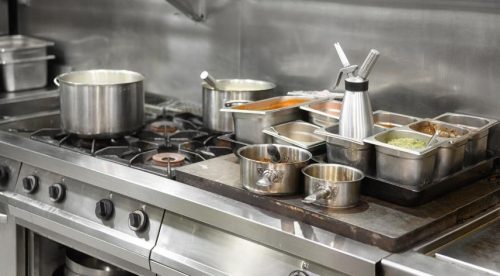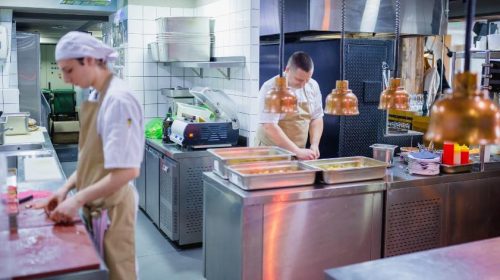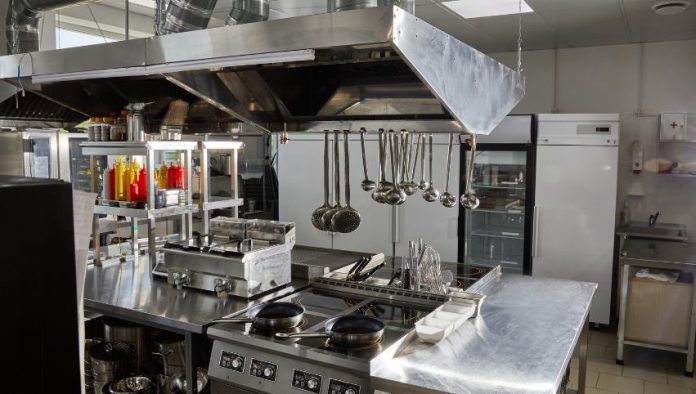Starting a food business can be a challenge. No matter your skill and passion, there are a number of barriers that could scupper your grand plans before they’ve had a chance to come to fruition.
What’s more, increasing costs mean that even established businesses are facing threats to their financial wellbeing.
Whether you’re a brand-new startup or you’re looking for ways to reduce costs and take your business to the next level, there is one solution that could greatly benefit you: a shared commercial kitchen.
What are shared commercial kitchens, and how do they work?
Shared commercial kitchens are professional spaces that can be used by multiple businesses – be they bakers, caterers, meal delivery services, or food trucks.
The idea of shared kitchens first came about in the 1960s. However, they have grown significantly in popularity over the last decade as a way of giving food entrepreneurs access to facilities without them having to invest in their own property.
As opposed to private kitchens, where businesses can hire kitchens just for themselves, shared kitchens are typically used by multiple food businesses at different times.
 These kitchens are state-of-the-art, offering multiple stoves, fridges, ovens and sinks, and any other essential equipment that a food business requires.
These kitchens are state-of-the-art, offering multiple stoves, fridges, ovens and sinks, and any other essential equipment that a food business requires.
Typically, the costs involved in maintaining the buildings – such as heating, electricity, security, and building codes, among others – will be handled by the company the food business rents from.
A shared-use commercial kitchen can typically be hired by a business for a set amount of time, whether that’s just for a few hours or on a monthly basis. If this sounds like an interesting solution for you, there is even the option of renting your own permanent workstation.
Shared kitchens can come in many different shapes and sizes. Depending on the type of business, certain shared kitchen types may be more suitable than others.
Types of shared kitchens include:
- Assembly line: A straight line of stations.
- Island: A central cooking area surrounded by preparation, service, and cleanup stations.
- Zone-style: Each station (preparation, service, and so on) has its own designated ‘zone’.
- Galley: All stations are placed along a single wall or on opposite walls.
What are the benefits of shared kitchens?
Booking time in a shared commercial kitchen can bring a lot of benefits for food businesses both new and established.
 Here are a few of the benefits of a shared kitchen:
Here are a few of the benefits of a shared kitchen:
- Reduced costs: For a new business, building or leasing a commercial kitchen is an enormous expense. Renting a shared kitchen results in a significantly lower cost, with businesses able to save money on rent and equipment costs.
- High-quality equipment: Shared kitchens provide businesses with professional, high-quality equipment that new businesses may not be able to afford on their own, which can improve the quality of the food produced.
- Networking: Sharing a commercial kitchen with others allows you to collaborate and share ideas and resources, and it could even lead to new business opportunities.
- Flexibility: When renting a shared kitchen, you can choose when and how often you want to use it. If demand for your products changes, you will be able to easily adapt.
- Safety: When using a shared kitchen, you can be sure that your product will be compliant with food safety regulations.
Depending on the shared kitchen you choose to rent, there can also be other benefits on offer, such as additional staff and support, spaces for special events, and managed deliveries.
Should you rent a shared commercial kitchen?
If you’re just starting out, renting a shared commercial kitchen can be a great way to navigate the early days before your business begins to grow.
Renting your own kitchen can be a risky prospect for a new business, especially when the costs involved are increasing all the time.
 Hiring a space in a shared kitchen can be a business lifesaver, giving you access to professional-grade equipment that you ordinarily may not be able to afford. It can allow you to focus on producing food without worrying about the costs involved with maintaining the building and crucially, allow you to collaborate with like-minded people. This, in turn, could create opportunities for new ideas and partnerships to flourish.
Hiring a space in a shared kitchen can be a business lifesaver, giving you access to professional-grade equipment that you ordinarily may not be able to afford. It can allow you to focus on producing food without worrying about the costs involved with maintaining the building and crucially, allow you to collaborate with like-minded people. This, in turn, could create opportunities for new ideas and partnerships to flourish.
With a shared kitchen, you won’t be tied to a long lease. This means that, should you successfully grow your business, you will be able to adapt your arrangement to suit your business’s needs.
Conclusion: a shared kitchen could be instrumental in your business’s success
A shared commercial kitchen can be the secret ingredient that allows your business to truly succeed. Whether you’re a caterer or a baker or you operate a food truck, by renting a shared kitchen, you can gain access to high-quality equipment and a safe and clean working space. In the process, you will also be able to collaborate with others to realise the true potential of your business.




































